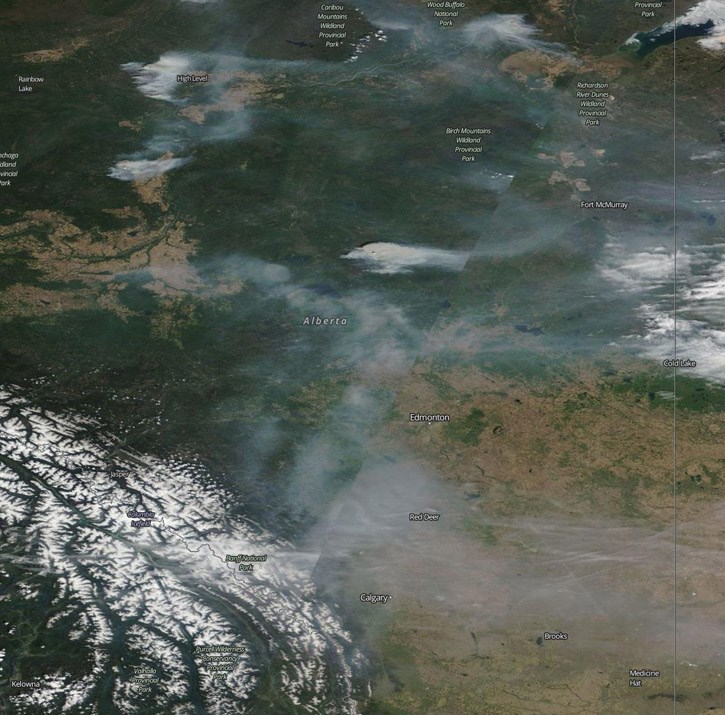BOW VALLEY – A ridge of high pressure in Alberta is pushing wildfire smoke across western Canada, including the Bow Valley, but a change in weather expected Thursday should provide some relief.
Kyle Fougére, a meteorologist with Environment and Climate Change Canada, said the building ridge of high pressure over the province has shifted the flow patterns to drive smoke south of High Level, where the Chuckegg Creek Wildfire continues to burn out of control for the second week.
It has also pushed pollutants in the air from the wildfire smoke towards ground levels and trapped them near the surface – including the Bow Valley.
"When you have a ridge of high pressure, you tend to have air descending and when there are pollutants in the air they can descend to the ground and get trapped at the surface," Fougére said.
He said the air quality rating for most of southern Alberta, including the Calgary area and Bow Valley, is at a moderate level.
"The smoke isn't really concentrated over any one area of southern Alberta," Fougére said.
He said the forecast for Thursday in the Bow Valley has a 60 per cent chance of precipitation and the winds are expected to shift, meaning relief in the region from the smoke.
"Falling precipitation tends to clear out some of the particulate matter in the air," he said.
Northern Alberta remains under a special air quality statement as a result of the 130,000 hectare wildfire. According to the provincial government, approximately 4,470 people have registered as being evacuated from the High Level and the surrounding area. The fire was last reported as being three kilometres southwest of High Level.
As of Monday (May 27), resources fighting the fire included 420 wildland firefighters, 168 structural fighters and staff on the ground, 28 helicopters, eight air tankers and 46 pieces of heavy equipment.




